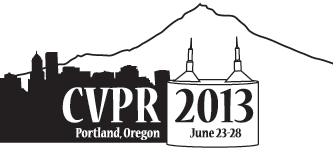-
One-Class Multiple-Look Fusion: A Theoretical Comparison of Different Approaches with Examples from Infrared Video
AbstractMultiple-look fusion is quickly becoming more important in statistical pattern recognition. With increased computing power and memory one can make many measurements on an object of interest using, for example, video imagery or radar. By obtaining more views of an object, a system can make decisions with lower missed detection and false alarm errors. There are many approaches for combining information from multiple looks and we mathematically compare and contrast the sequential probability ratio test, Bayesian fusion, and Dempster-Shafer theory of evidence. Using a consistent probabilistic framework we demonstrate the differences and similarities between the approaches and show results for an application in infrared video classification.
Related Material
[pdf][bibtex]@InProceedings{Koch_2013_CVPR_Workshops,
author = {Koch, Mark W.},
title = {One-Class Multiple-Look Fusion: A Theoretical Comparison of Different Approaches with Examples from Infrared Video},
booktitle = {Proceedings of the IEEE Conference on Computer Vision and Pattern Recognition (CVPR) Workshops},
month = {June},
year = {2013}
}
These CVPR 2013 workshop papers are the Open Access versions, provided by the Computer Vision Foundation.
Except for the watermark, they are identical to the accepted versions; the final published version of the proceedings is available on IEEE Xplore.
Except for the watermark, they are identical to the accepted versions; the final published version of the proceedings is available on IEEE Xplore.
This material is presented to ensure timely dissemination of scholarly and technical work.
Copyright and all rights therein are retained by authors or by other copyright holders.
All persons copying this information are expected to adhere to the terms and constraints invoked by each author's copyright.

